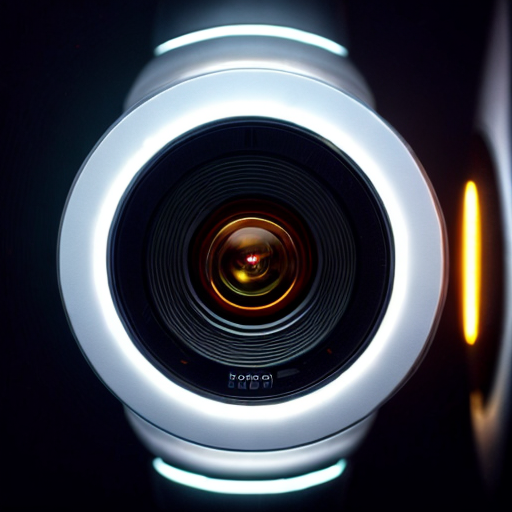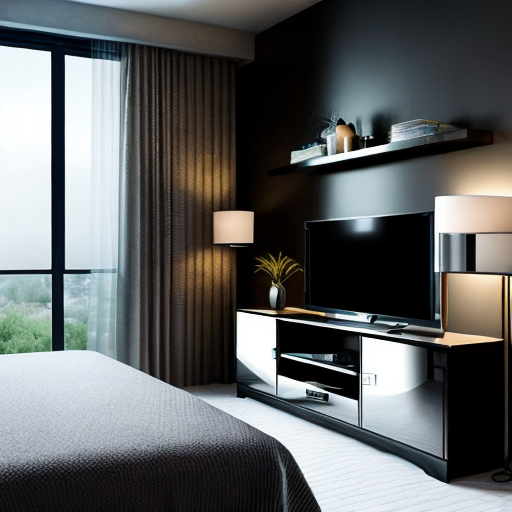Introduction to Smart Home Wireless Technologies: A Comprehensive Overview
Welcome to the wild world of smart home wireless technologies! In this comprehensive overview, we'll dive into the fascinating realm of smart homes and the wireless wonders that make them tick. From the trusty Wi-Fi that connects our devices faster than a caffeine-addicted cheetah, to the Bluetooth that magically pairs our gadgets like a matchmaker on steroids, we'll explore it all. Prepare to be amazed by Zigbee, the wireless protocol that sounds like a sassy dance move but actually helps your devices communicate seamlessly. And let's not forget Z-Wave, the technology that brings a whole new meaning to the phrase 'home sweet home.' So, grab your popcorn and get ready for a wireless adventure that will leave you wondering how you ever survived without these smart home marvels!
Wi-Fi vs. Zigbee: Comparing the Pros and Cons for Smart Home Applications
One interesting fact about Zigbee, a popular smart home wireless technology, is that it operates on a mesh network. This means that each Zigbee device in a smart home can act as a repeater, extending the network's range and improving its reliability. As a result, even if a device is located far away from the central hub, it can still communicate with other devices by hopping through intermediate devices. This unique feature of Zigbee ensures a robust and efficient network, making it an ideal choice for large-scale smart home deployments.
Get ready for a wireless showdown like no other as we pit Wi-Fi against Zigbee in the ultimate battle for smart home supremacy! Wi-Fi, the undisputed heavyweight champion of connectivity, brings lightning-fast speeds and a wide range of compatibility to the ring. But don't count Zigbee out just yet! This underdog wireless protocol may not have the same speed as Wi-Fi, but it makes up for it with its low power consumption and ability to create robust mesh networks. So, whether you're team Wi-Fi or team Zigbee, one thing's for sure - your smart home applications are about to get a serious upgrade!
Z-Wave vs. Bluetooth: Understanding the Differences and Use Cases in Smart Home Systems

In the world of smart home systems, two wireless technologies stand out: Z-Wave and Bluetooth. While both have their merits, understanding their differences and use cases is crucial for creating a seamless and efficient smart home experience.
Let's start with Z-Wave, the unsung hero of smart home connectivity. Z-Wave operates on a low-power mesh network, allowing devices to communicate with each other effortlessly. This makes it ideal for larger homes or buildings where signal strength can be a challenge. With its impressive range and ability to support up to 232 devices, Z-Wave is perfect for creating a comprehensive smart home ecosystem. From controlling lights and thermostats to managing security systems, Z-Wave's reliability and scalability make it a top choice for smart home enthusiasts.
On the other hand, we have Bluetooth, the wireless technology we all know and love. Bluetooth's strength lies in its simplicity and widespread compatibility. Almost every smartphone, tablet, and laptop comes equipped with Bluetooth capabilities, making it incredibly convenient for connecting devices. Bluetooth excels in short-range applications, making it ideal for smart home systems that require close proximity, such as smart locks or speakers. Its ease of use and ability to connect directly to devices without the need for a hub or gateway make Bluetooth a popular choice for beginners dipping their toes into the smart home waters.
While Z-Wave and Bluetooth have their unique strengths, it's important to consider the specific needs of your smart home system. If you're looking for a robust and scalable solution that can handle a large number of devices, Z-Wave is the way to go. However, if simplicity and compatibility are your priorities, Bluetooth may be the better option. Ultimately, the choice between Z-Wave and Bluetooth depends on your specific use cases and preferences, so choose wisely and enjoy the wonders of a truly connected smart home.
Thread vs. DECT ULE: Exploring Emerging Wireless Technologies for Smart Homes
A fun fact about Zigbee, a popular smart home wireless technology, is that it was named after the zigzag dance pattern of honeybees. The creators of Zigbee wanted to emphasize the ability of the technology to create seamless and interconnected networks, just like the synchronized movements of bees in a hive.
Get ready to dive into the exciting world of emerging wireless technologies for smart homes as we explore Thread and DECT ULE. Thread, a low-power wireless protocol, is designed specifically for smart home applications. With its robust mesh network and support for IPv6, Thread offers reliable and secure connectivity for a wide range of devices. On the other hand, DECT ULE (Ultra Low Energy) is a wireless technology that combines the reliability of DECT (Digital Enhanced Cordless Telecommunications) with low power consumption. DECT ULE is perfect for smart home systems that require long-range coverage and excellent voice quality, making it an ideal choice for applications like home security and telephony. So, whether you're team Thread or team DECT ULE, these emerging wireless technologies are set to revolutionize the way we experience smart homes.

